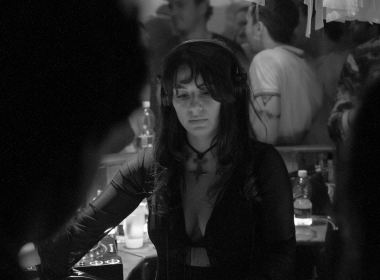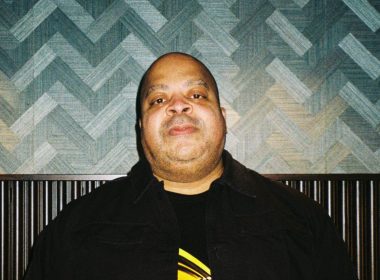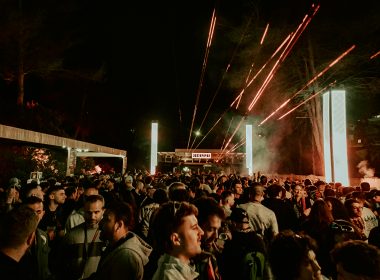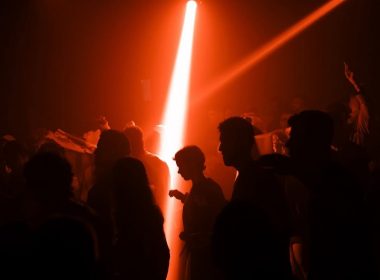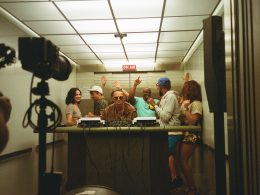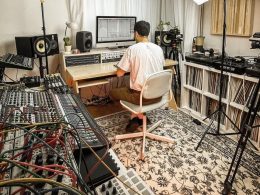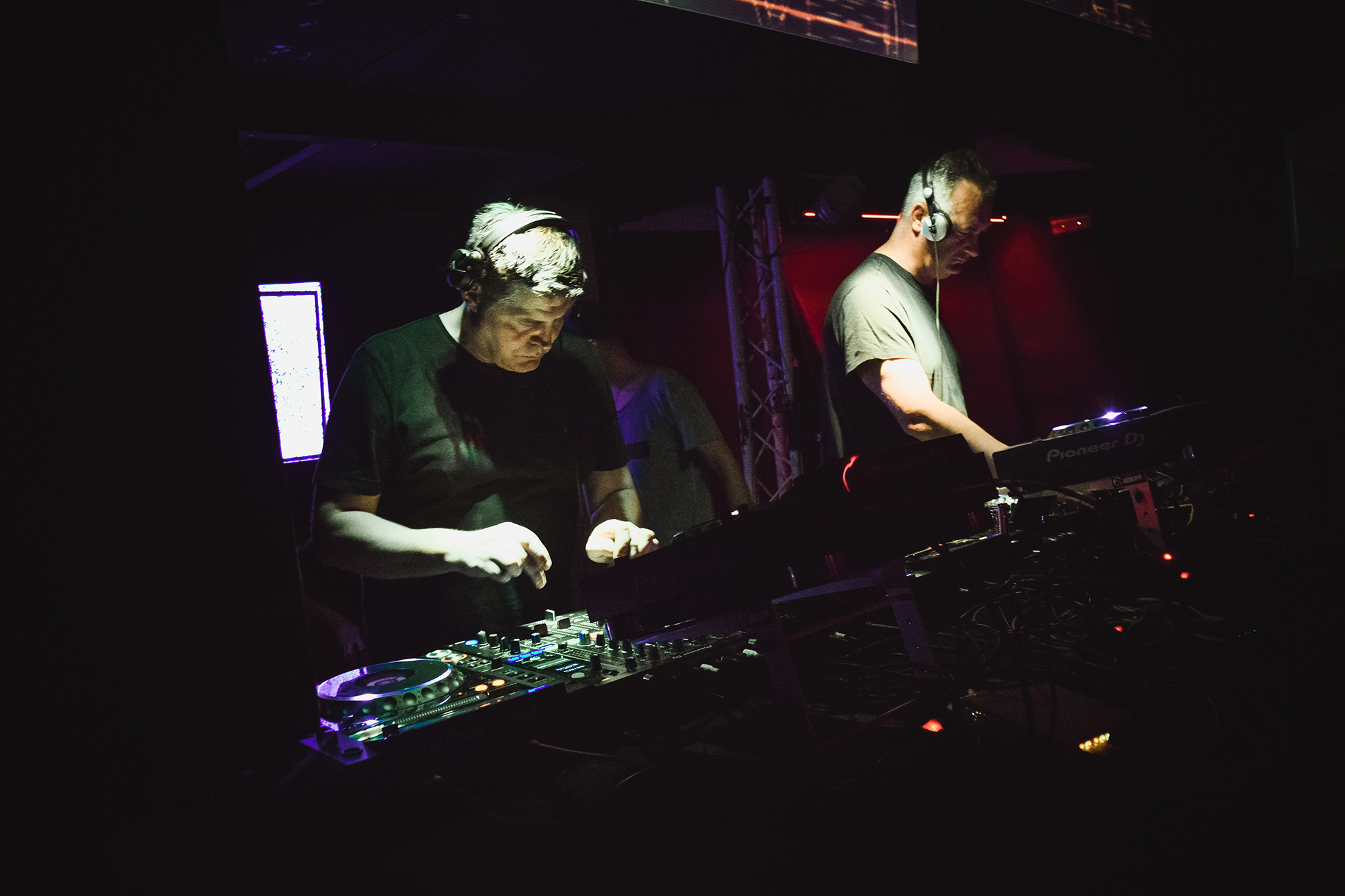We had the pleasure to meet the explosive and funky duo SRVD, composed of Matt Edwards AKA Radio Slave and Patrick Mason. Two very different personalities which merged into a new, fresh project which has already shown the scene what it is made of. There’s a lot to expect here, but for the moment, we remember the nice chat had with Matt and Patrick.
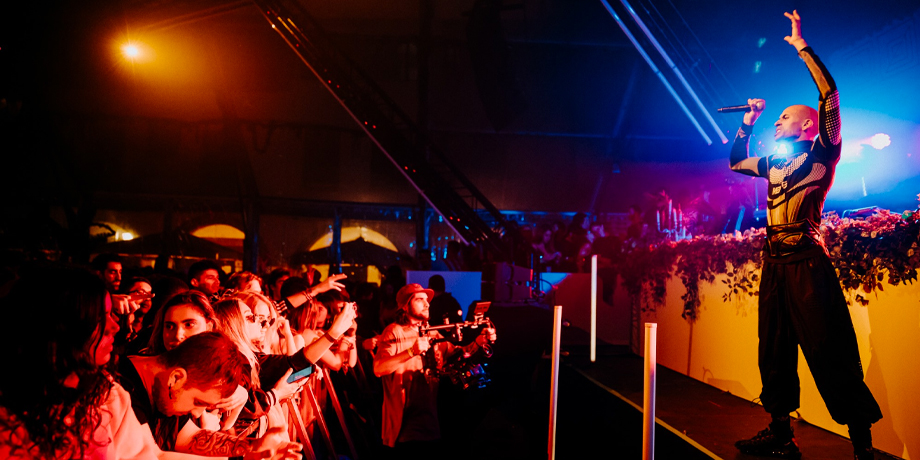
Patrick, saw Matt playing for the first time in Panorama Bar. Then got to know each other and started the project. When was the exact moment you thought and understood this was going to be a winning combination?
Matt: Yes, we met at Panorama Bar, I was djing and Patrick didn’t know who I was. We got to meet that same night (he’ll tell you more about it) and soon after he came to my house. He was into djing as well, he wanted to share his music, and he showed me a video of him singing which really wowed me. I tend to not do collaborations, I’m already very busy and I try to focus on the numerous things I have to do, but when we met… It was an instant kind of energy. It worked. We made “Elevate”, the first track, and during my gig at Panorama Bar that same week, Patrick took the mic, jumped on stage and sung it live, improvising…
And what happened then?
Patrick: People just lost their shit in that moment…! I’ve been going to Berghain for 5 years on a regular basis. In the beginning, I didn’t really understand it: people facing one direction and moving to the same beat for over 24h. But at Panorama Bar, with House and Disco… That’s where I like to move and dance! Also, about 3 or 4 years ago there were way more Drag Queens going on stage, people were going crazy in clubs, dancing, it was a unique vibe. As Matt was saying, I sang “Elevate” and, after those several years of absence, it came back, the vibe was back. People were losing their shit, throwing their shirts around their heads, screaming, it was crazy. And that was the moment when we realized that it was something real, that hadn’t been done before, that people wanted. That’s the actual connection of someone on the stage, interacting with the crowd as well as with the DJ.
Matt: You always have a DJ playing, but there has hardly ever been the interaction with the crowd in such a way, because of the lost energy of the performance side. In Panorama Bar both Patrick and I have a lot of friends, it’s like a big family and it’s actually performing for and with your friends. This makes it even more special, there’s a special vibe, electricity happens. I get goosebumps thinking about it (laughs).
In an interview, Patrick, you said you were about to go away, just before Radio Slave appeared on stage…
Patrick: My friends and I had been in Panorama Bar, in our usual left corner, for already two hours and we were about to leave, the music was shit. By chance and out of pure interest I check the time table and read “Radio Slave”. My immediate thought was “Who the heck calls himself Radio Slave?!” and then Matt came on stage and I was literally like “Are you fucking kidding me?!”. It was a middle-aged guy, with his cap on, all scared, and at that point, I really wanted to know what it was going to be like. The first 4 beats, the bass and the kick completely mesmerized us. We went to the front of the DJ booth and stayed there for the whole set. We were dancing like crazy, I didn’t want to leave the dance floor, I didn’t even want to go to the toilet! He finished the set, I grabbed him, brought him to the bar, had some shots and yeah, that’s how it started.

In the looks, your styles are quite different and this could make one think also of different personalities. Do you feel you compensate each other?
Matt: I think we complement each other. We both have the love for the same style of music, a fusion of pumping New York or Chicago style, which takes in Techno and House. What I love about it, is that it always has to have a certain type of energy. When I play at Panorama Bar, I always play at 128 BPM; if you’re closing, you need to keep it going as people want energy. You don’t want to play floaty afterparty tracks, you want power. And this is enough to make us the right combination. Patrick loves of all this as well, and this is probably what makes everything right; our bouncing of ideas is very natural, very quick. We can actually do remixes in just a few hours.
Patrick: Matt is an amazing producer, has been for many years, so what I’m lacking in those skills, he has. My quirkiness, my creativity in songwriting, my trend forecast, is what I bring to the table. We definitely complement each other.
Do you think that nowadays a lot is based on image, and music sometimes may be left aside?
Matt: Well yes, of course. It’s what we are trying to address with what we are doing, we are making much more of a performance, with Patrick as a frontman; it’s more than “just” a live. But music is the foreground of everything: he’s singing, dancing, moving, performing. Even if the lights were off and it was completely dark, it would still work. There is that live element that you just can’t get from a vinyl or a CDJ. It’s spontaneous, improvised and, of course, we are playing with this, also in the tracks we make. Our latest track “Fake”, for example, is an ode to what is happening with Social Media. We are very aware of everything.
Patrick: We’re tackling momentarily social issues, breaking them up in different ways. Another example is our upcoming track “Black On Black”: on the surface when you listen to the vocals and you listen to it in a club, you only scratch the objective superficial side of it. “Everyone is wearing black, black, black on black” – in Berghain the dress code is black so now everybody is wearing black, everybody has this conformity. They wear black so they see it as a hymn to themselves, but actually, it’s not. There’s a phrase I wrote, which says “Down the hole, the rabbit’s gone”: it’s a reference to Alice in Wonderland. Everyone is following the white rabbit, basically following a crowd, being numbed, without original thoughts nor original style. Everyone is following a narrow hole, but when they come out of the other side, they realize the rabbit’s gone and they’re clueless of what’s actually happening. This is the deeper meaning of our track. We’re not only trying to create bangers, but also give a deeper meaning to what we produce.
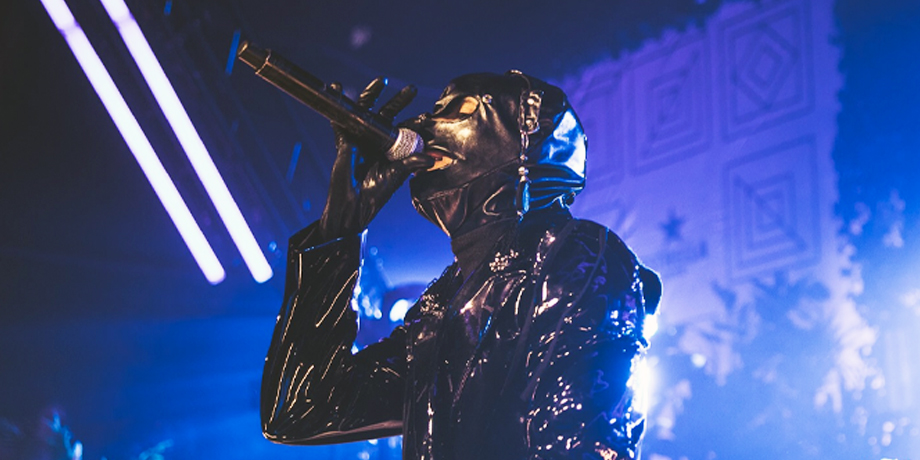
And do you think that all this gets to the public? Do people understand it?
Matt: Yes, I think so. I think that if people are really into it, they understand. You could be playing to a wider border of more mainstream viewers, and they’ll probably see the face value of what you’re doing. But again, the reason why we’re doing all this is, because there’s a message in it. And it’s also a message to people who’d like to do something like this: to not be afraid of doing it, of performing, of being “yourself”.
As it is, when the two of you met, Patrick had just started djing but already had an artistic background, right?
Patrick: Yes and no. The house where I grew up was very soulful, very powerful. I grew up with Michael Jackson, as well as with Disco, Old School R’n’B and Hip hop, and I remember when my dad was driving me to school on his Honda and we were pumping the mixtapes of Run DMC and stuff… That’s actually where I come from. As a child, I was always dancing and I was always on spot. Also, when I was in school, I was taking acting classes and was in a musical at the age of 14. I loved and love all of it, to sing, to perform, to be in front of people, put on a show. But my actual background, what I studied when I came to Berlin, was Graphic Design, Art Direction and Fashion. That’s where my two degrees are in, and I worked a lot as an Art Director for high fashion brands. My goal always was to find this bridgework and incorporate all my passions into one. This project was the phoenix that made me combine fashion with creative direction, dancing, movement, singing and performing. When I’m on stage I’m able to put all of this together. To be a full time creative you have to incorporate all of it, because, for me, everything is one.
Which is the part you love the most of working together?
Matt: I think it’s that moment where we both look at each other with goosebumps and we are in the “Aaah” mood (laughs). That’s actually what you look for in the studio, the moment where you just want to scream.
Patrick: Definitely that’s one of the most important moments. You get to the “Aaah” and you hysterically click on save, save, save.
Technically, how is your live show organized?
Matt: At the moment everything is done through Ableton and it’s a very simple set up: a computer, an Akai APC40 to sequence everything and add a few effects, a drum machine and an old drum pad that you can hit and, of course, the microphone. Because it is quite song-based, it can’t be too improvised, it’s not like a modular jazz project. Patrick needs cue points to know when to sing.
Patrick: The microphone is actually the only important thing! (laughs)
And how is your studio organized? Are there any particular gears you like to use?
Matt: No, not really. I think it’s all about ideas, I don’t believe it’s about having particular software, because obviously you need to have ideas. In the case of “Black On Black” for example, at the beginning I wanted to do “Everyone Is Wearing Black”; but then after a whole day spent in Bordeaux with our friend Tom, we came up we the other title. These things evolve from just one idea, just a few words, that’s all you need, and then it expands. It’s not about what you have or what you use, it’s about having the initial idea. And of course, Patrick is a great singer and I can make the songs… That surely helps.
Do you prefer producing in the studio or touring around doing live shows? Are they two completely different things in your opinion?
Matt: I think both help each other, we learned a lot from doing the shows, but ultimately the core of everything is done in the studio in Berlin, where we have the time to actually work on the music as well as on the show.
Patrick: The studio is where we create and the stage is where it all happens, where it all comes to life.
Would you be able to renounce to one of the two?
Matt: I think we couldn’t do one without the other, they have to go together. And even though we produce music in the studio, then on stage it’s improvised and it’s always different.
Patrick: All the tracks that we play at our live shows are our own, we don’t play others’ tracks. What we do in the studio, we then want to show it on stage.
How would you define your sound?
Matt: Wow, I don’t know. I think it’s a kind of mutation of a New York 80s’ sound, but it’s also Techno and it has a ballroom, voguing style.
Patrick: That’s where we get most of the inspiration from: the vogue balls placed in the air, the late 80s’ in New York, Paradise Garage, Studio 54, especially the energy which was created there.
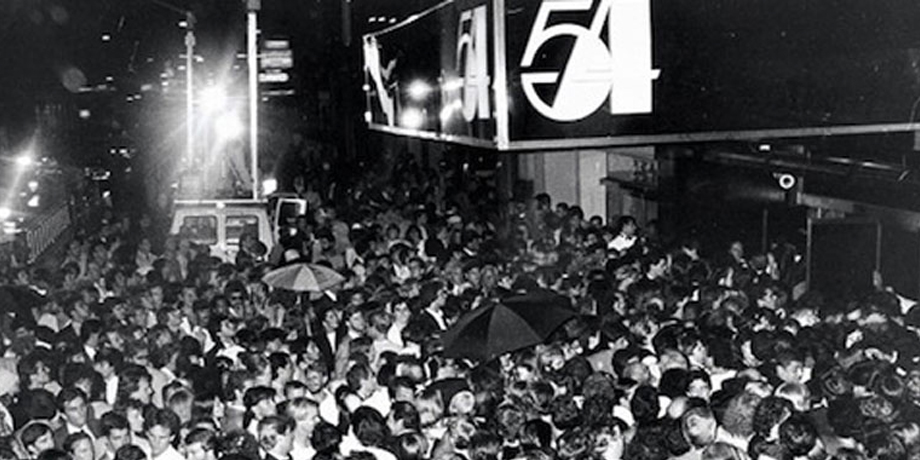
How would you describe your live show to someone who has never seen it?
Matt: Explosive!
Patrick: It’s an act of God. It’s something you’re not going to expect, but you’re going to be completely drawn into. It’s mesmerizing, hypnotizing, it makes you just want to shake your fucking ass to the floor! It makes you want to enjoy life, celebrate life!
What or who inspires you the most? Do you find your inspiration also in other types of art?
Matt: I’m inspired by everything. For me it’s always changing, it depends on the mood and the time. I think both Patrick and I agree on Grace Jones, who as a performer did everything, touching Club as well as Pop culture. I also believe I was very lucky. When I was younger, I was hanging around with people a lot older than me, and my musical education came from people who were into Disco and House, which was very important. I was also lucky to hear DJs like Larry Levan, live a very special time, where the clubs were a fusion of expressions of the gay culture which in the 80s’ was very pure. It was a mix, from Latin to Techno, to House, everything was a melting pot and the music which came out from that period was very unique. All this inspired and still inspires me a lot.
Patrick: 3 years ago, while getting ready to go and dance at Berghain, I would always put on “Paris is Burning”, it was like a ritual. It’s a documentary of the voguing ballroom scene in the late 80s’. The energy that you perceive from it is amazing, the freedom, especially in the queer culture, and how they created their own safe space to live their truth, just being themselves and having fun, without fighting, without anger. It was like a friendly competition of exposing and sharing their skills while enjoying what they were doing.
Is there a big difference between the past and the present of clubbing?
Patrick: People back in the days were actually enjoying the music; now I feel people are way more on their phones, everyone is just facing the DJ, because they have to. I had a talk with Mark Flash, from Underground Resistance, and he told me that when he was playing in Detroit, he used to tell people to not pay attention to him play: he’s just the sound maker, he just provides the vibe, he wants the crowd to dance with each other. And I think that all this is getting lost nowadays, especially because people just come to see the DJ who’s behind the decks, they are not into interacting with each other, everyone is by themselves.
Matt: In our show having Patrick sing live is something that luckily keeps the attention of people high. He could pull people out and this doesn’t make you want to look at your phone. It’s important because, as said, everyone is focusing on the wrong things.
And what do you think about the music industry of today?
Matt: I don’t know (laughs). It’s hard to catch up with everything that’s going on, especially because of Social Media, as we were saying before.
Patrick: I personally think it’s dreadful. I haven’t been able to listen to the radio for about a couple of years now. Sadly, there are only a few artists right now that are pushing and creating really good music. One example is Kelsey Lu, who’s an amazing artist: her songwriting, her visuals, her playing a cello live on stage, her voice, what she represents. Since the 20s’, every decade has its own signature, you can hear it, see it and you know which it is. But what do we have now? Everything sounds the same, every fucking track is made with auto-tune, there is no depth, no originality, no personality. We have trap, and it’s better we don’t even start with that…
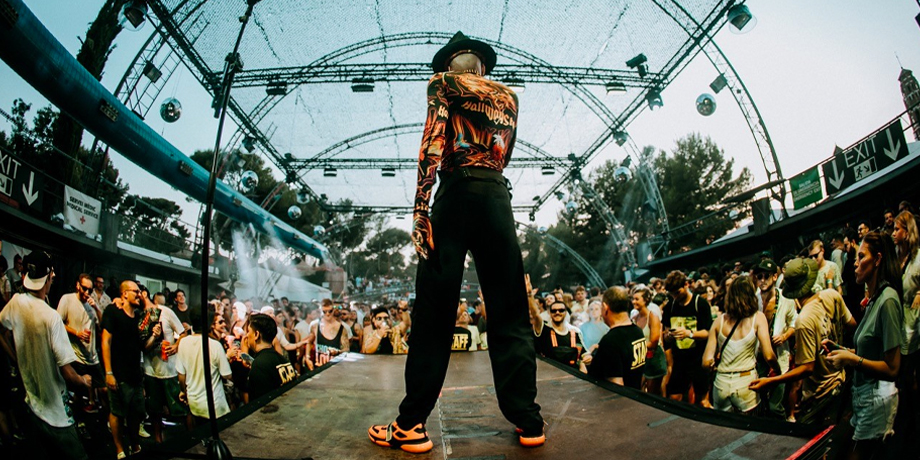
If you’d change something, what would it be?
Matt: Maybe it’s too late for a change. It’s all about education, and there are so many ways in which people can absorb information that it makes it difficult to create the right channels. In the 20s’ people were listening to music and didn’t know whether it was a coloured or a white person singing. That’s what Blues music was made of, people just listening to the radio and enjoying what they were hearing. That romanticism has been lost nowadays. How many people close their eyes whilst listening to music? They’re all busy on the phone, on the computer, doing lots of other things. It’s what I envy my parents and my grandparents, who were listening to music not knowing anything about who was singing, they were just enjoying it. Yes, I would love all this to come back.
At the end of 2019, you published another EP with the first SRVD remix, the one of “Another Club”. How was it to work at an “old project” with a “new project”?
Matt: We did that remix like in 2 hours (laughs). It totally fits with what we are doing just now, we could incorporate my world with his world and fit it into the live shows.
Patrick: That track… I remember when he first played it, I immediately knew the reference to Lady Gaga, and it flipped my shit. I made him play it twice in the club. When he asked me to do the remix it was all new to me, but he didn’t lose much time to convince me.
All your productions, “Elevate”, “The Yard Man”, have been a great success and the most well-known DJs of the scene have been playing them non-stop. Were you expecting this success? How did you react to it?
Matt: It has been amazing! You never know how things are going to fly, and it has been really satisfying to see this response, especially from colleagues.
Patrick: For me, it was a dream come true. Matt is a producer since a long time, so he knows how it feels, but for me, it was something completely new. I was not from the scene, I had started working with him just 2 years before, and I remember the first time hearing our track played in Berghain… I cried. All my friends were with me, they were hugging me and screaming, it was insane. And now to see that it has been picked up so well and people love what we do and love our sound… It’s amazing! Another moment I loved was when I saw the video Amelie Lens posted on her Instagram of her playing “The Yard Man” at Time Warp; seeing the people go mental was crazy for me.
Radio Slave is a big name in the electronic scene, over the years you have been producing on Rekids some of the biggest artists around. Do you think that this background helped to make SRVD known? Do you think you would have had the same success if you had started “from zero”?
Matt: In a way, it is like starting from zero because people don’t know what it is about; but yes, it was fast. We stepped through some things because we already had a network of people that we could use. It surely helped a lot.
Patrick: At the beginning, promoters were afraid to book us because they didn’t know what SRVD was. It started more as a word of mouth, of people who had seen the live show and were mind blown by it, thankfully. We are actually creating our fan base on a live, see, experience basis, and I think that’s the most important thing. At first, people didn’t even know how to pronounce SRVD, and now “The Yard Man” has over 2 million plays on SoundCloud. This is insane.
In less than a year you have been playing in big events such as Afterlife, Sónar OFF for Innervisions, Printworks, and many more places. Are you happy with what you have done? What is your main goal, where would you like to arrive?
Patrick: I think it’s really incredible. A lot of DJs work decades to get where we are now, and if you think that we have been out for just one and a half years, it is really amazing. And it is also why we are really super grateful.
Matt: We are very happy. What has to be understood is that it’s not only about djing; it’s a live show, something with a lot of work behind, as every live performance. We would love to scale it and do bigger shows, to bring around the world.
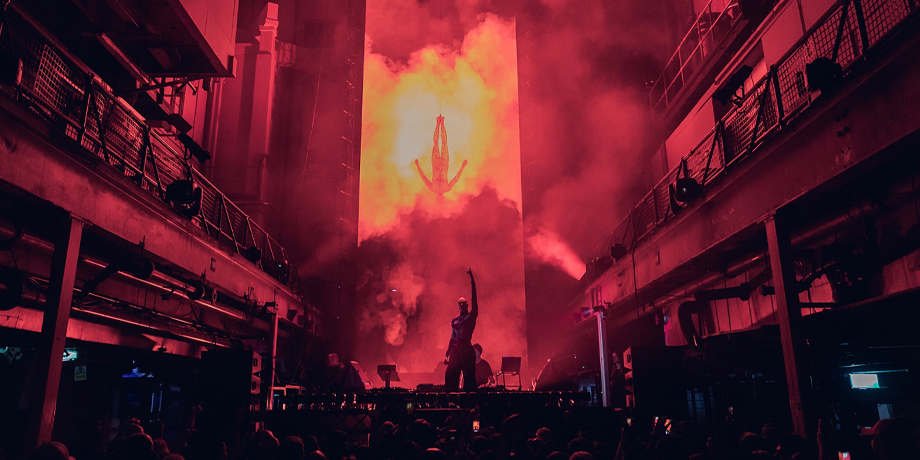
Which is a club, festival, situation in which you would really love to play?
Matt: Maybe Coachella. Or even better The Grammys, when we will win the Grammy (laughs).
Patrick: Well, you’re laughing but actually we’re working on an album and our aim is to get a nomination for a Grammy, and win it. This is my biggest goal.
Which are going to be the next steps of SRVD?
Matt: We are constantly working to make the show bigger and bigger. There’s actually a lot more to come, we’re making videos and many other things. The storytelling within the music is very important. Using art, fashion, music, everything together is something that brings us together. Putting our resources into one, we are creating something new.
Patrick: We would love to incorporate visuals, use my experience and my fashion background to make it even more special. I would also love to incorporate and collaborate with more brands, for example Margiela, which embodies my spirit, or Comme Des Garçons, Prada, Nike. Our show is a mixture of powerful, dark and in-driven, but also very light, dancy and uplifting. Because of all of these segments in our sets, I always have one or two fashion brands in mind which I know would represent well that energy.
(Cover Image © Phlame)



